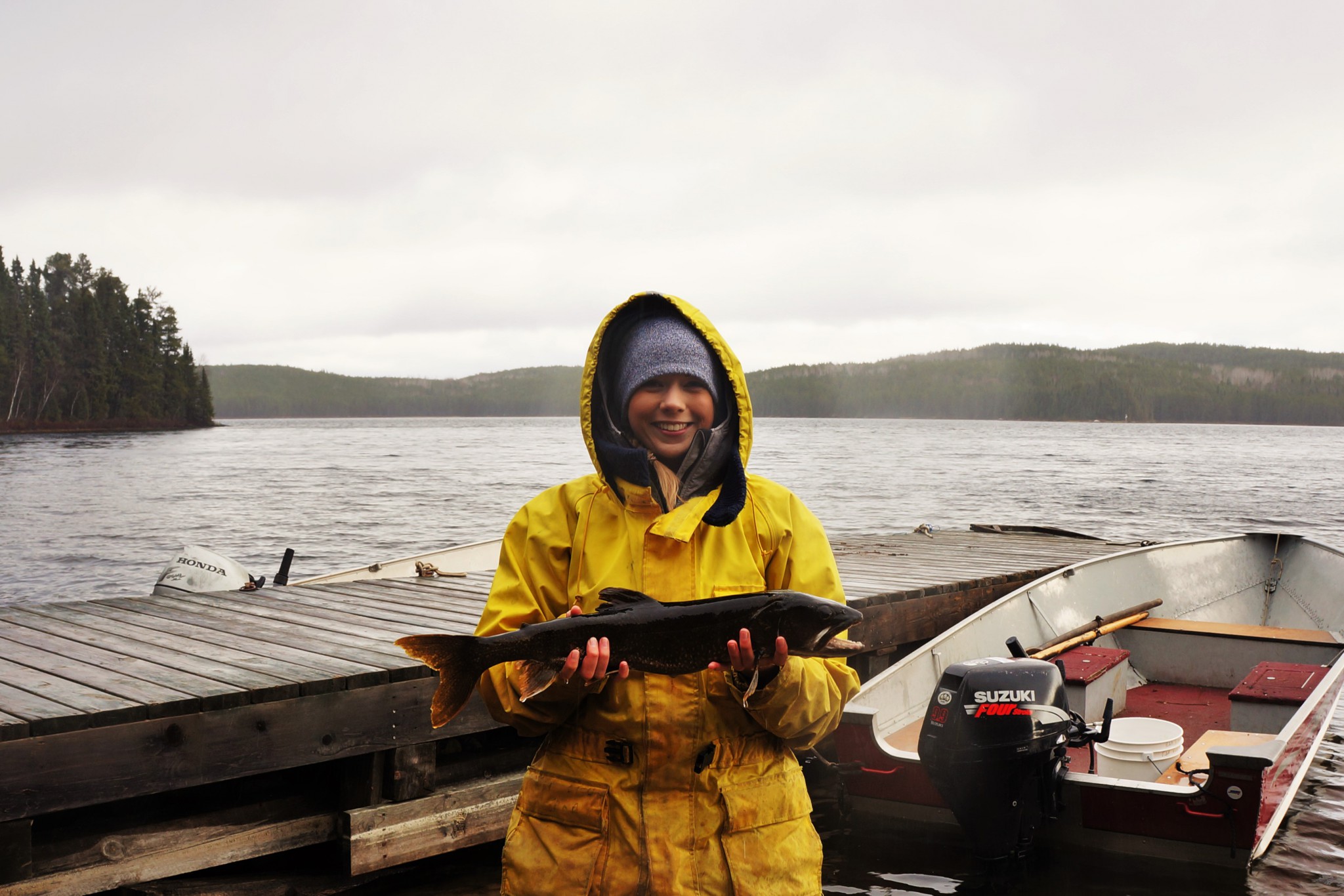When Lauren Hayhurst arrived as a summer student (Research Assistant, Fisheries) at IISD-ELA in 2014, it was her 12th co-op term with the University of Manitoba Environmental Studies co-operative education program. That may be some kind of record for the program: Hayhurst is an avid learner and enjoys the learning opportunities. With so many work experiences to compare to, she soon started drawing similarities between the whole-ecosystem research at IISD-ELA and what she has seen across the country. In particular, she noticed a strong parallel between invasive species experiments at the facility—such as how introducing pike to one lake led to declines in other fish populations—and the accidental introduction of a predator (a fox) to a remote ecological island reserve (Funk Island) off the coast of Newfoundland and Labrador.
“It had such a dramatic impact on the population that it awakened me to the idea of island studies. And it’s similar to the lakes out here, that an introduction of a predator or some other change or experiment…has cascading effects—that’s really what I’m interested in studying and being a part of,” said Hayhurst.
At ELA, Hayhurst got to be involved in multiple studies that consider cause and effect, and the complexity of ecosystems. On an average work day, she would visit two lakes to study their fish populations. She and her colleagues would catch fish, either by net or rod, and then collect information on them, such as species, weight and length. At times, their netting was so successful that the three bins they brought to fill with water and hold the fish were not enough, and the boat became an impromptu aquarium. “We’ve had hundreds and hundreds of white sucker in the nets. If they’re overflowing the bins, we make sure there’s water in the boat and that they’re happy.” Yes, this means the fish end up swimming around her rubber boots. They are later safely released after being processed.
Hayhurst’s work days usually involved a breakfast at the very collegial cafeteria, followed by heading to the fish lab at 8:00 a.m. where she would gear up for the day, donning a giant yellow jacket, rain pants and rubber boots. Then she and her colleagues would make the trip to a lake they were monitoring—a trip that could involve multiple modes of transportation including truck, ATV, boat and hiking.
Working at the IISD-ELA, which involves staying at the site at least five days a week (those from Winnipeg often go home on weekends) also gives researchers the chance to indulge in other interests. For Hayhurst, it was the perfect place to practice her photography; she even won “best landscape picture” in the annual photo competition, and a print of it now graces the common room in the Vallentyne Building’s common room. She says the IISD-ELA is an ideal place to grow one’s talents: “It’s kind of the right atmosphere for it. This summer, I think a lot of people took up knitting. You can bring a project out here and make it happen. The city and the cell phone distractions aren’t applicable.”
Providing job opportunities for students has long been important at the ELA, and many students go on to be successful in the scientific field.
